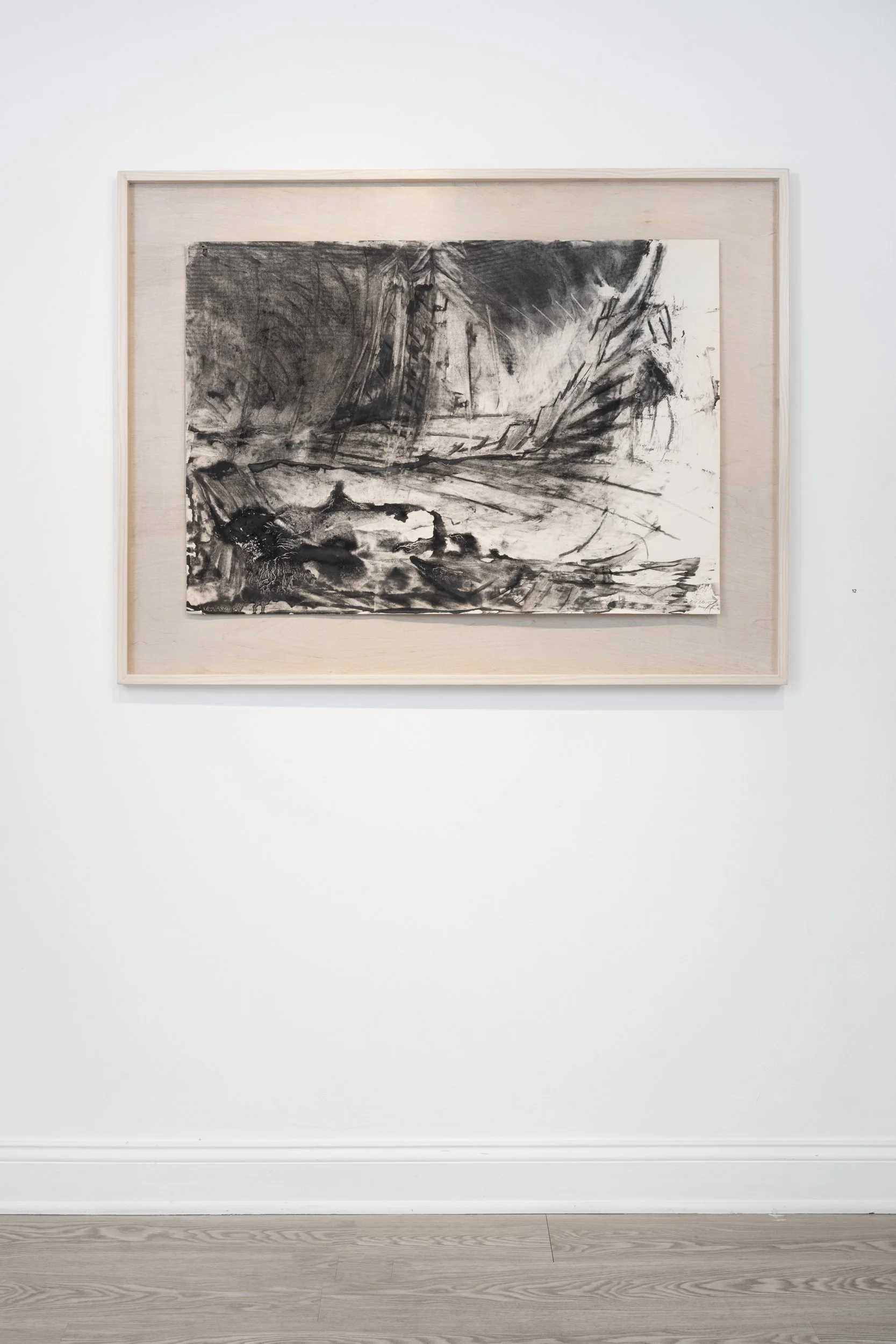Catalyst Contemporary is pleased to present “Sedimentary Time,” a group exhibition with works on paper by William S. Dutterer, Artemis Herber, and Kei Ito on view from March 9 through April 8, 2023. The collection of works presents a series of catastrophic events and memories both personal and cultural through the medium of charcoal — a material made through a process of fire — that transforms these memories into energy. This medium combined with the subject matter summons the mythological gift of Prometheus to creatively turn the fire back into knowledge for humankind’s consideration.
One of Dutterer’s charcoal drawings was drawn almost immediately after he witnessed the second World Trade Center Tower fall on 9/11. The piece, simply titled “Sept. 11, 2001”, features an upright axe emerging from the surrounding dark and gestural charcoal almost scribbled around its form. The traditional axe head is replaced by a gaping/gasping head - a moth in his work from this period - and the handle of a second axe sticks out diagonally from the dark aura the first one emerges from, obscuring the head of the second axe. Here, Dutterer’s piece stands as a dark ominous monument and at the same time as witness testimony. As seen in his other pieces, the axes stand in as both symbols of the towers and the larger US military Industrial Complex and its response — the Iraq War.
Another series of pieces to address 9/11 specifically are Ito’s large charcoal rubbings tracing the textures of the stone slabs removed from the wreckage of the Pentagon 9/11 attacks, which are now located outside the Baltimore World Trade Center. For Ito, this series of rubbings treats the original stone as a living witness of the Pentagon attacks, something Ito himself did not see. Instead, the rubbings recall ideas of both a witness portrait drawn by a courtroom sketch artist and a tombstone. This evidence/witness testimony is presented to us by Ito to examine memory not only as an item held by human minds but by objects as well.
A few of Herber’s works do address 9/11 as well but also other catastrophic events both real and imagined - such as the Lucky Dragon 5 incident from 1947 to imagined apocalyptic landscapes caused by a variety of possibilities such as nuclear disaster and climate change. Herber’s collection of drawings goes through an extensive process of adding and removing charcoal on paper, sometimes so much so that the paper ends up ripping. Herber examines memory not through personal memory or through objects but rather as something stored within the ground — a look at memory through archaeological and geological excavations.
This collection of works on paper brings us along the journey these artists take through the ideas and limitations of memory both held within our minds and the land itself. The title points towards larger questions surrounding the validity and strength of our social/personal memory and how it relates to the various landscapes presented in the exhibition.
William S. Dutterer (1943-2007) was a passionate artist whose paintings and drawings tackle socially conscious topics like war and humans’ cruelty toward humans as well as more personal ideas of loneliness and isolation. While Minimalism is the hallmark of his earliest output, the vast majority of Dutterer’s subsequent work often walks a thin figurative line between humor and tragedy.
Artemis Herber is an award-winning artist in both mediums of sculpture and painting. Being of Greek heritage, she developed concepts on how humans live in shared spheres towards current conditions on Earth and ‘Gaia Rise’ in the context of polit-myth. Her research into how humans have affected the Earth’s environment, geology, and climate has deepened through her residencies at the Rensing Center (SC), theCoLAB (London), Skopelos Foundation, and The Delphic Preview, Greece.
Kei Ito is a visual artist working primarily with camera-less image making and installation. Ito’s work addresses issues of deep loss and intergenerational connection through the exploration of inherited trauma passed down from his late grandfather, a survivor of the atomic bombing of Hiroshima in 1945. Ito utilizes photography’s materiality and experimental processes to make visible the invisible: radiation, life and death, and memory.








